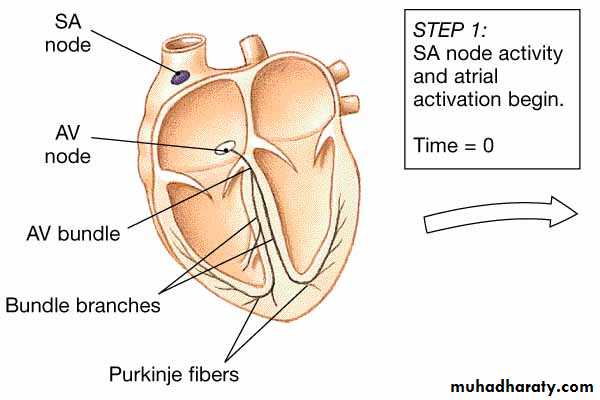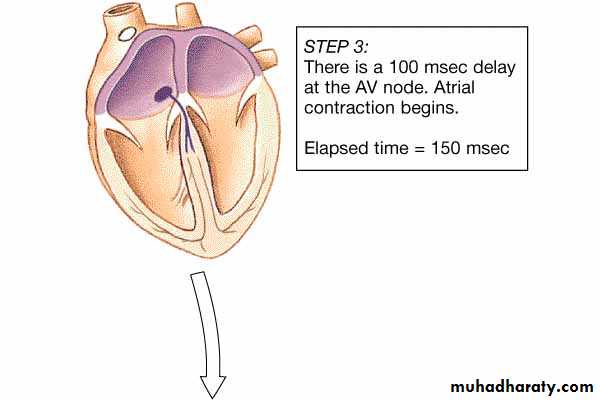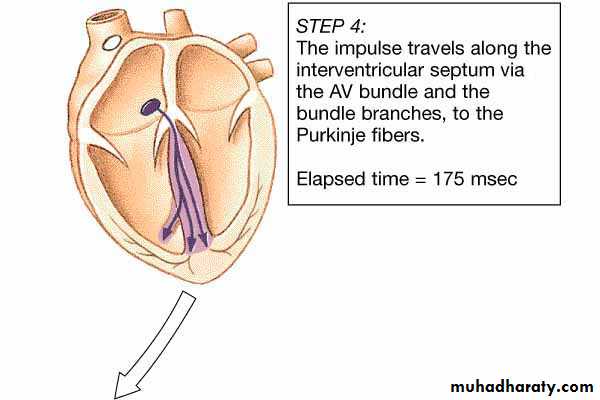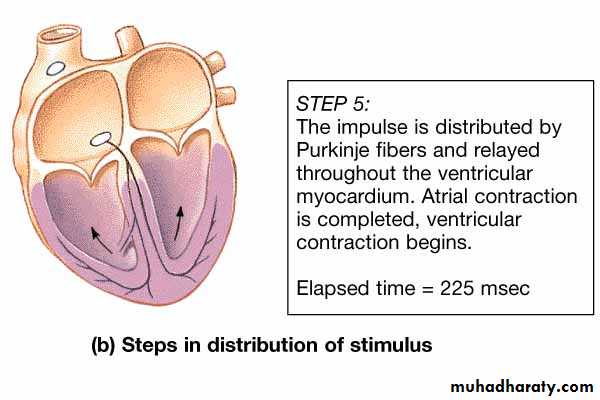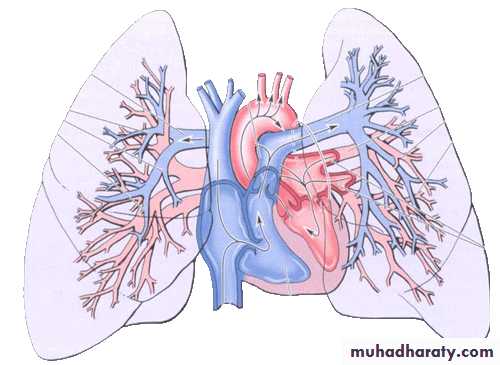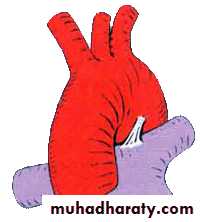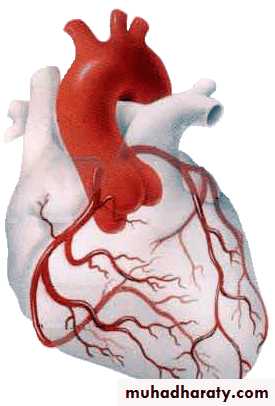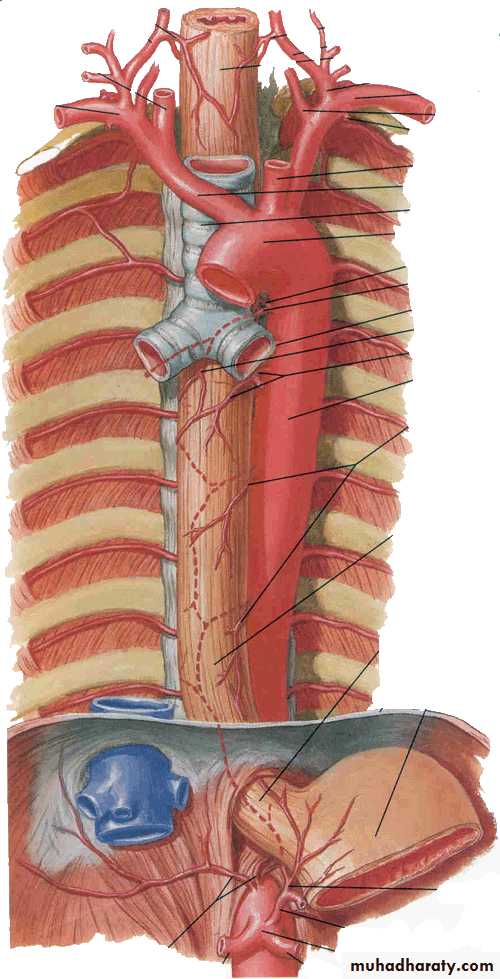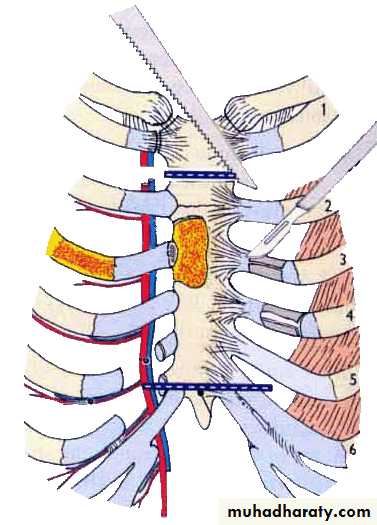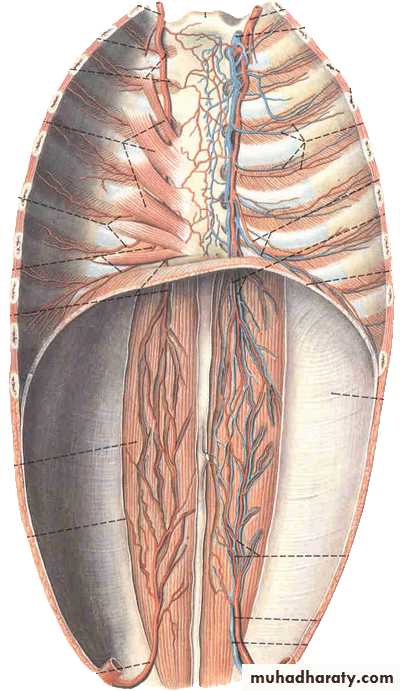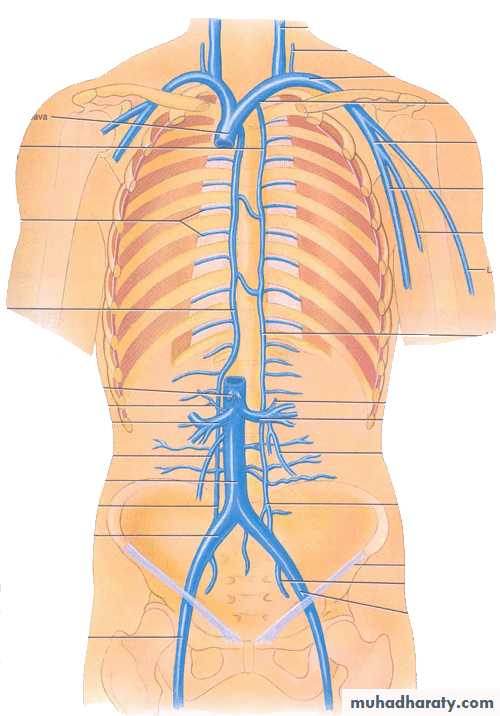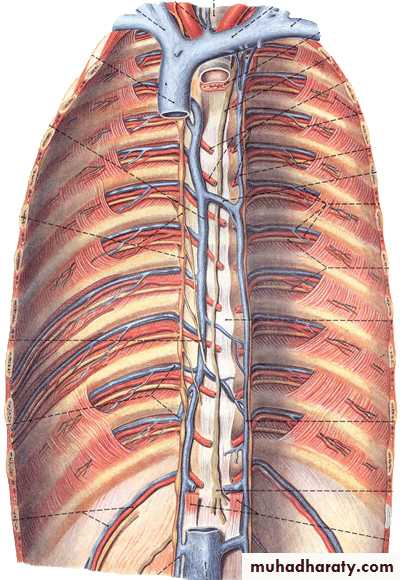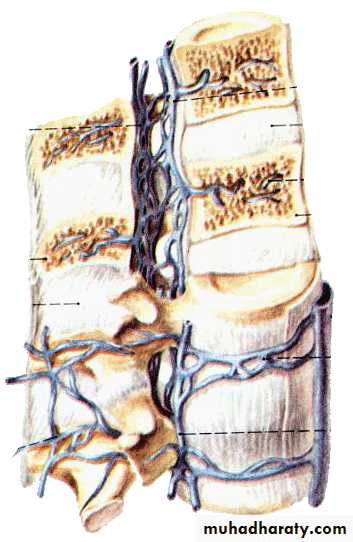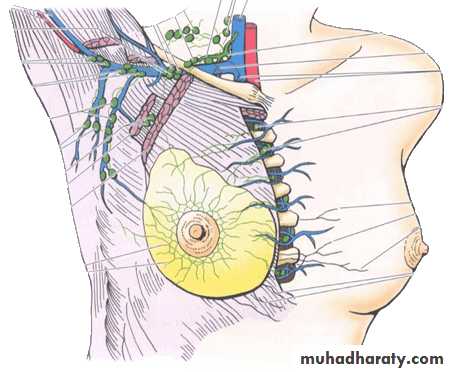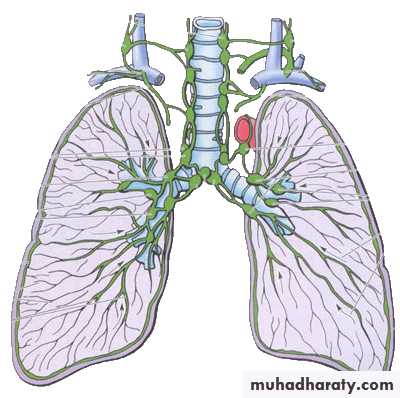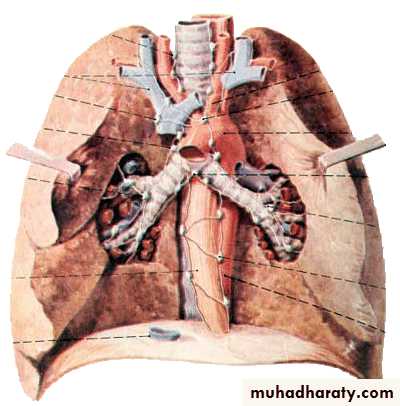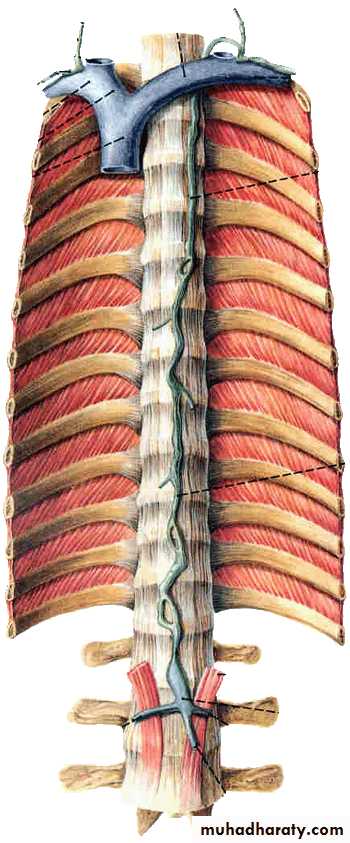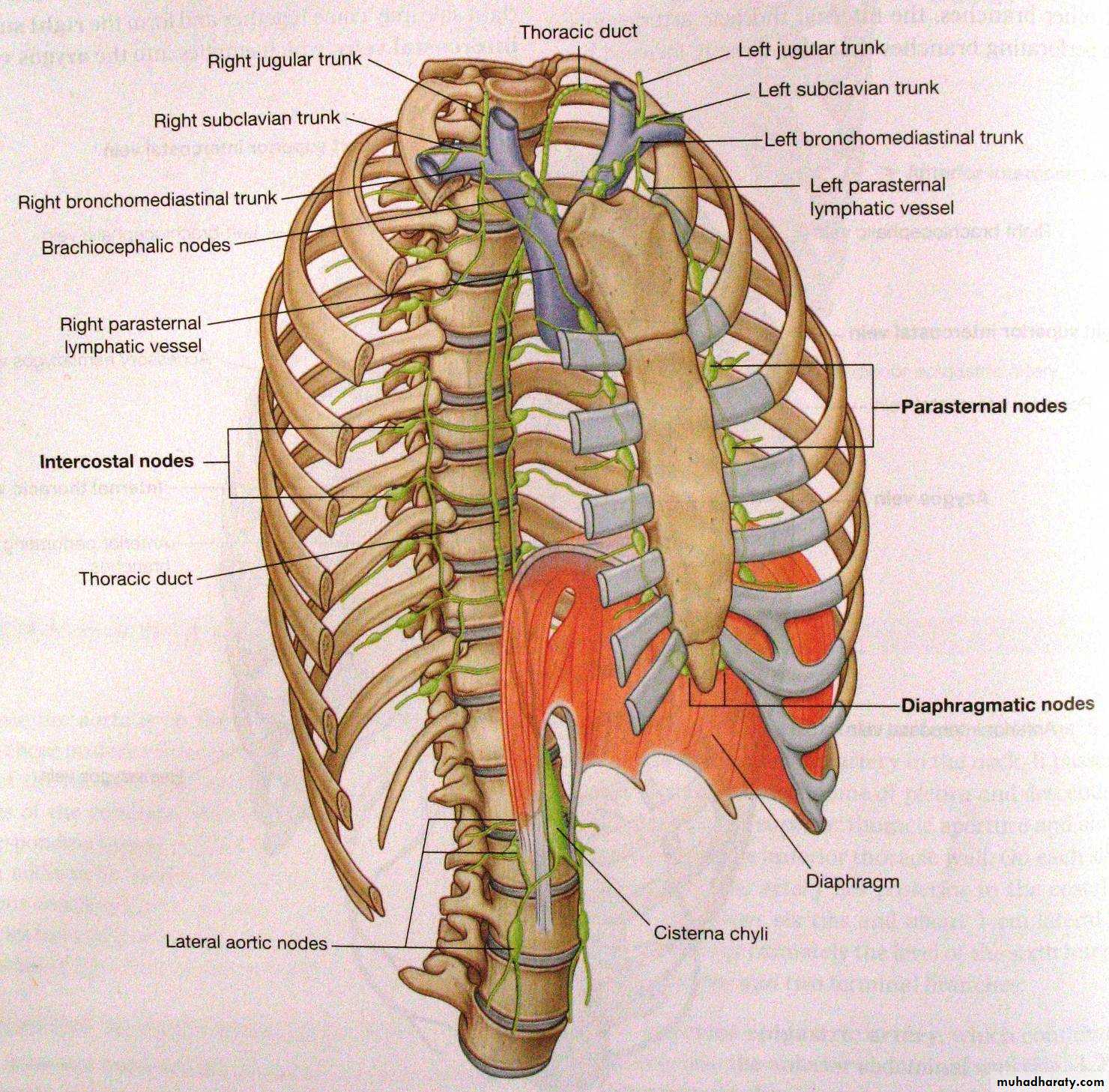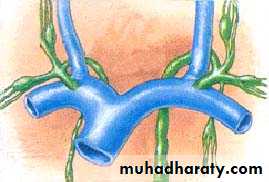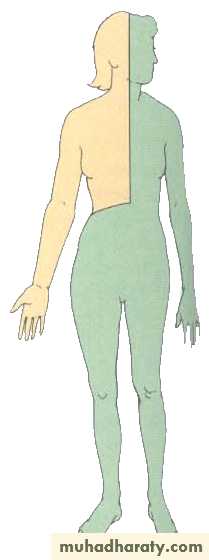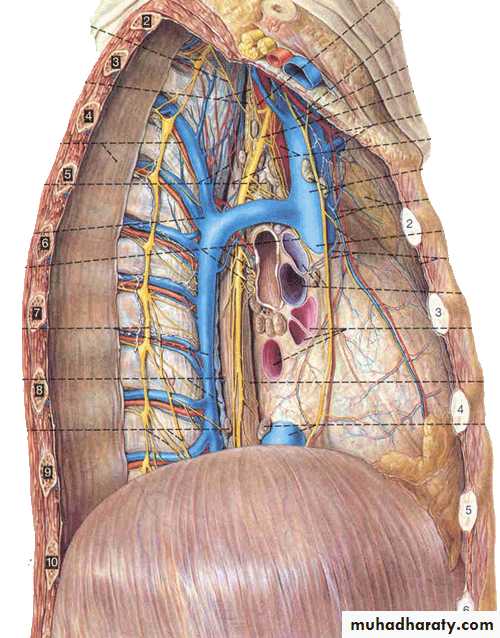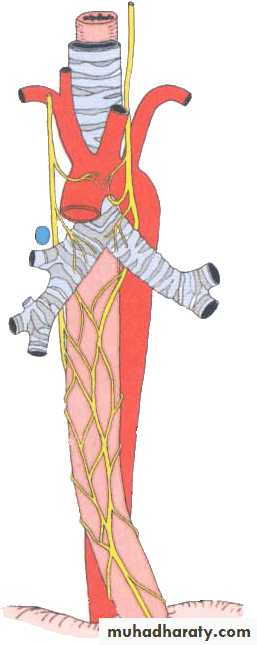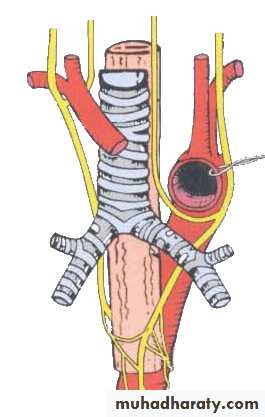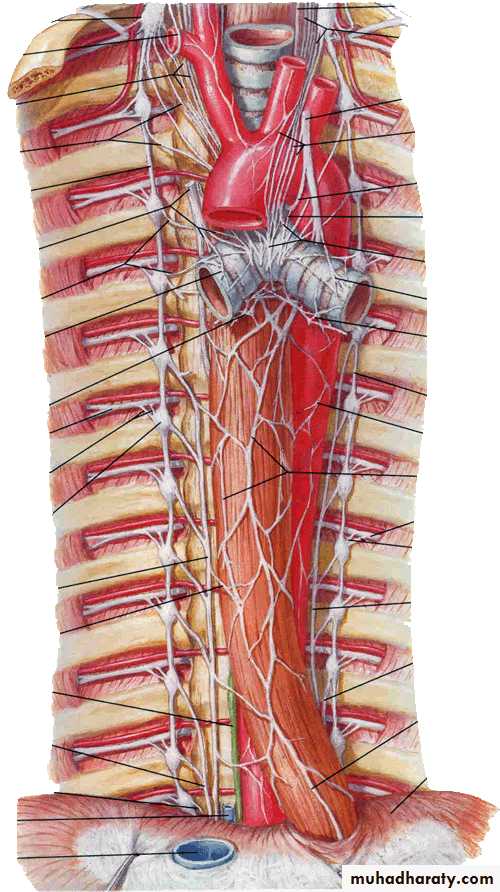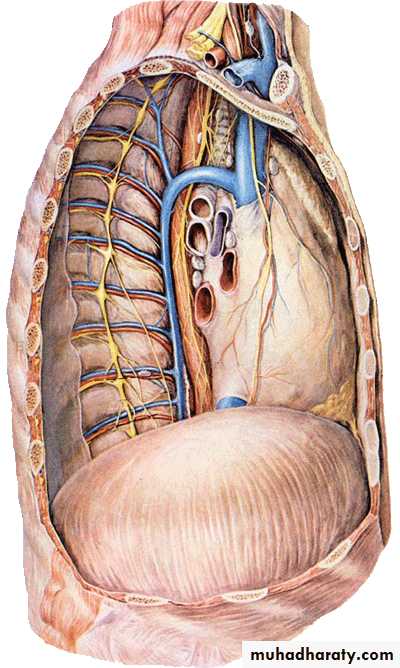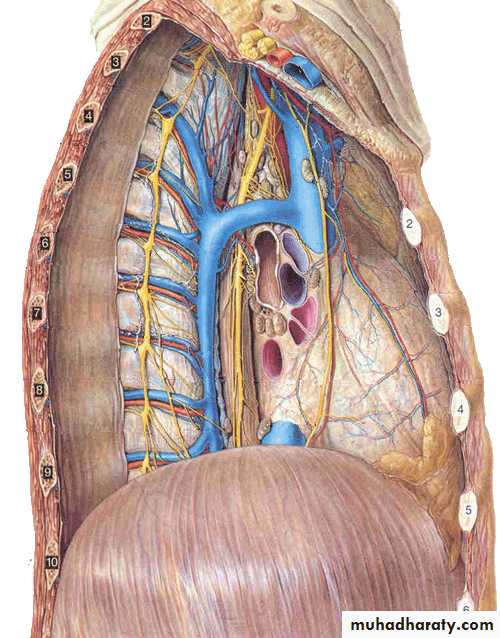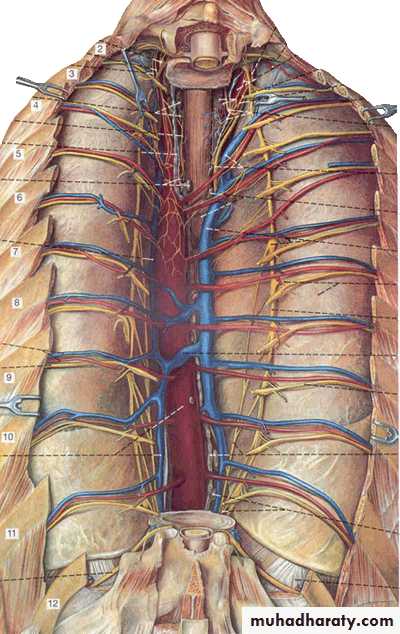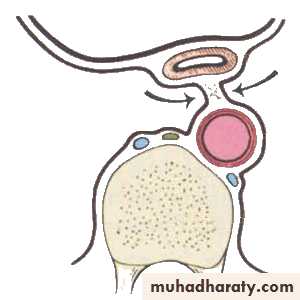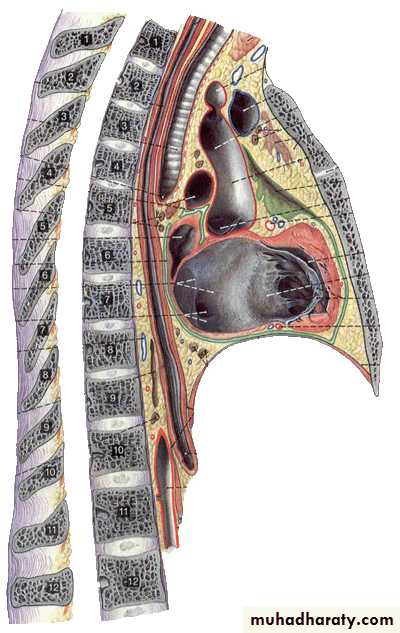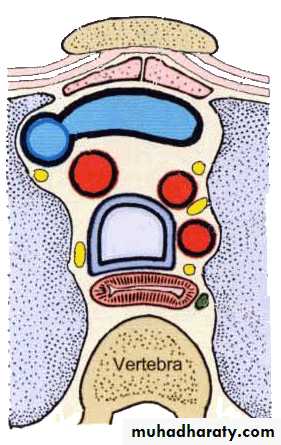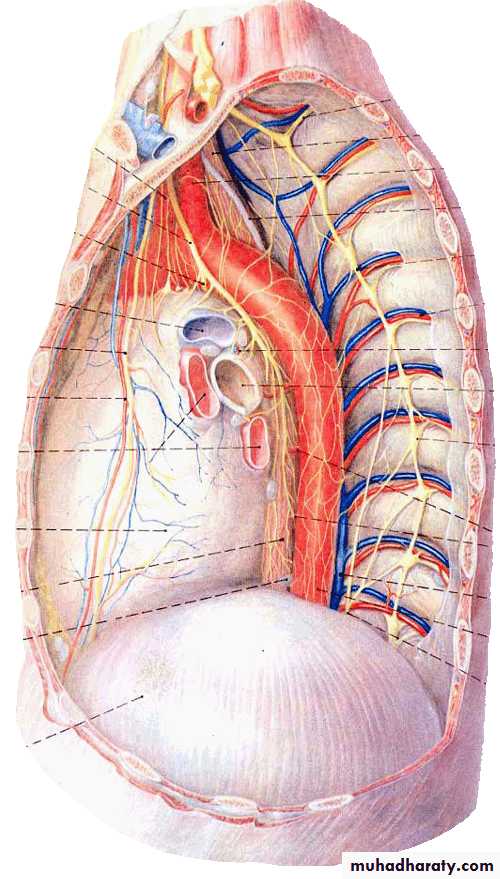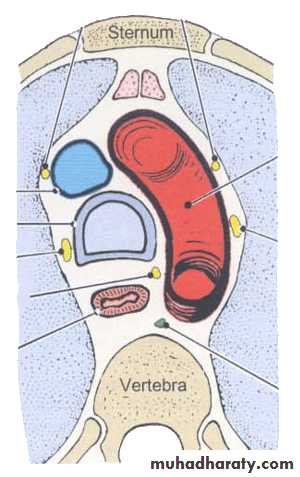Cardiac Anatomy
Human Anatomy, 3rd editionPrentice Hall, © 2001
Internal Anatomy of the Heart
Chambers of the heart
Right & left atrium
Separated by the interatrial septum
Right & left ventricle
Separated by the interventricular septum
Human Anatomy, 3rd edition
Prentice Hall, © 2001Structure of the Heart Wall
Epicardium = “upon the heart” = visceral pericardium
Dense fibrous connective tissueMyocardium is the middle layer
Cardiac muscle
Endocardium = “inside the heart”
Simple squamous epithelium
Human Anatomy, 3rd edition
Prentice Hall, © 2001The Great Vessels
Superior & inferior vena cava
Return blood from body to right atrium
Coronary Sinus
Returns blood from heart wall to right atrium
Human Anatomy, 3rd edition
Prentice Hall, © 2001The Great Vessels
Pulmonary veins
Return blood (oxygenated) from lungs to left atrium
Aorta
Takes blood from left ventricle to body
Pulmonary artery
Takes blood (deoxygenated) from right ventricle to lungs
Human Anatomy, 3rd edition
Prentice Hall, © 2001Valves of the Heart
Atrioventricular (AV) valves separate the atria from the ventricles
Tricuspid valve – right
Bicuspid valve (mitral) – left
Semilunar valves separate the ventricles from the great vessels
Pulmonary semilunar valve
Aortic semilunar valve
Heart sounds
Human Anatomy, 3rd edition
Prentice Hall, © 2001Valves of the Heart (Ventricular Diastole)
Human Anatomy, 3rd edition
Prentice Hall, © 2001Valves of the Heart (Ventricular Systole)
Human Anatomy, 3rd edition
Prentice Hall, © 2001Conducting System of the Heart
Depolarization spreads up the ventricular walls via Purkinje fibers.
Ventricles contract
Human Anatomy, 3rd edition
Prentice Hall, © 2001The Cardiac Cycle
Contraction pattern of the myocardium
Determined by the conduction system
Systole = contraction
Diastole = relaxation
Both atria contract
Both ventricles contract
Atria alternate with ventricles
Human Anatomy, 3rd edition
Prentice Hall, © 2001Conduction System of the Heart
The average heart rate is 72 beats/min.
Depolarization stimulates contraction
Human Anatomy, 3rd edition
Prentice Hall, © 2001Conducting System of the Heart
Depolarization begins in the sinoatrial (SA) node
Pacemaker
Conduction System of the Heart
Depolarization spreads through atria, atria contract
Human Anatomy, 3rd editionPrentice Hall, © 2001
Conducting System of the Heart
Atrioventricular (AV node) depolarizes
Depolarization travels down the AV bundle (bundle of His)
Human Anatomy, 3rd edition
Prentice Hall, © 2001Conducting System of the Heart
Depolarization spreads up the ventricular walls via Purkinje fibers.
Ventricles contract
Arteries of thorax
Pulmonary trunkArises from right ventricle
Runs up, back ,and to the left
Bifurcates inferior to aortic arch into right and left pulmonary arteries, one for each lung
Pulmonary arteries
Right pulmonary artery-passes posterior to ascending aorta and superior vena cava to hilum of right lung
Left pulmonary artery-passes anterior to descending aorta and left main bronchus to hilum of left lung
• Arterial ligament - remnant of ductus arteriosus, connects bifurcation of pulmonary trunk to inferior border of aortic arch
• Triangle of ductus arteriosus
•
• Ascending aorta
Runs upward, forward and to the right,Extends to level of second right sternocostal joint
Branches: right and left coronary arteries
• Aortic arch
• Continuation of ascending aorta• Curves upward, to the left and posteriorly, then downward, arching over left principal bronchus and pulmonary trunk to lower border of T4 level, to become descending aorta
• Branches (from right to left )
• Brachiocephalic trunk-extends to right sternoclavicular joint, bifurcates into right subclavian and right common carotid arteries
• Left common carotid artery
• Left subclavian artery
• Aortic isthmus-baroreceptor
• Aortic glomera-chemoreceptor
Thoracic aorta
• Continuation of aortic arch at lower border of T4• Courses downward on left side of, then in front of vertebral column
• Passes through aortic hiatus of diaphragm at level of T12 vertebra to enter abdominal cavity
• Main branches
• Parietal branches
• Nine pairs posterior intercostals arteries
• One pair subcostal artery
• For lower nine intercostals spaces and upper part of abdominal wall; superior phrenic arteries supply the superior surface of the diaphragm.
• Visceral branches
• Bronchial branches: one or two for each lung
• Esophageal branches
• Pericardial branches
Internal thoracic artery -descends into thorax 1.2cm lateral to edge of sternum, and ends at the sixth costal cartilage by dividing musculophrenic and superior epigastric arteries
Veins of thorax
• Brachiocephalic veins• Formed by union of internal jugular and subclavian veins posterior to the sternoclavicular joint
• Angle of union is termed venous angle
• Superior vena cava
• Formed by union of right and left brachiocephalic veins behind the right sternocostal synchorndrosis of first rib
• Runs vertically down on right of ascending aorta
• Joined by azygos vein at level of sternal angle
• Enters right atrium at lever of lower border of third right sternocostal joint
• Collects blood from veins of upper half of body
Azygos vein
Begins as continuation of right ascending lumbar veinAscending along the right side of vertebral column
Joins superior vena cava by arching above right lung root at level of T4 to T5
Receives right posterior intercostals and subcostal veins plus some of bronchial, esophageal and pericardial veins, and hemiazygos vein
Tributaries-hemiazygosv. and accessory hemiazygos v., which receive most left posterior intercostals vein and left bronchial veins
Veins of vertebral column
Consists ofExternal vertebral
venous plexus
Internal vertebral
venous plexus
The lymphatic drainage of thorax
The lymphatic drainage of thoracic wallTo axillary lymph nodes
To parasternal lymph nodes (along internal thoracic vessels)
To intercostals lymph nodes from deeper structures
lymph nodes of the thoracic contents
lymph nodes of trachea, bronchi and lungsPulmonary lymph nodeslie in the angles of bifurcation of branching lobar bronchi
Bronchopulmonary hilar lymph nodes-lie in the hilus of the lung
Tracheobronchial lymph nodes-situated above or below the bifurcation of trachea
Paratracheal lymph nodes -along each side of the trachea
Anterior mediastinal lymph node lies anterior to the large blood vessels of thoracic cavity and pericardium; the efferents unite with those of paratracheal lymph nodes, to form the right and left bronchomediastinal trunks The left bronchomediastinal trunk terminates in thoracic duct, and right in the right lymphtic duct
Posterior mediastinal lymph nodes lie along the esophagus and thoracic aorta
Thoracic duct
Begins in front of L1 as a dilated sac, the cisterna chyli which formed by joining of left and right lumbar trunks and intestinal trunkEnter thoracic cavity by passing through the aortic hiatus of the diaphragm and ascends along on the front of the vertebral column, between thoracic aorta and azygos vein
Travels upward, veering to the left at the level of T5
At the roof of the neck, it turns laterally and arches forwards and descends to enter the left venous angle
Just before termination, it receives the left jugular, subclavian and bronchomediastinal trunks
Drains lymph from lower limbs, pelvic cavity, abdominal cavity, left side of thorax, and left side of the head, neck and left upper limb
Right lymphatic duct
Formed by union of right jugular, subclavian, and bronchomediastinal trunks
Ends by entering the right venous angle
Receives lymph from right half of head, neck, thorax and right upper limb
Phrenic nerve
Descends over scalenus anterior to enter thoraxAccompanied by pericardiophrenic vessels and passes anterior to lung roots between mediastinal pleura and pericardium to supply motor and sensory innervation to diaphragm
Sensory fibers supply to pleurae, pericardium and peritoneum of diaphragm; usually right phrenic nerve may be distributed on live, gallbladder and biliary system.
Left vagus nerve
Enter thoracic inlet between left common carotid and left subclavian arteries, posterior to left brachiocephalic veinCrosses aortic arch where left recurrent laryngeal nerve branches off
Passes posterior to left lung root
Forms anterior esophageal plexus
Forms anterior vagal trunk at esophageal hiatus where it leaves thorax and passes into abdominal cavity , then divides into anterior gastric and hepatic branches
Right vagus nerve
Enter thoracic inlet on right side of tracheaTravels downward posterior to right brachiocephalic vein and superior vena cava
Passes posterior to right lung root
Forms posterior esophageal plexus
Forms posterior vagal trunk at esophageal hiatus where it leaves thorax and passes into abdominal cavity, then divides into posterior gastric and celiac branches
Recurrent laryngeal nerves
Right one hooks around right subclavian artery, left one hooks aortic archBoth ascend in tracheo-esophageal groove
Nerves enter larynx posterior to cricothyroid joint, the nerve is now called inferior laryngeal nerve
Innervations: laryngeal mucosa below fissure of glottis , all laryngeal laryngeal muscles except cricothyroid
Bronchial and esophageal branches
Thoracic sympathetic trunk
Branches of sympathetic trunk to thoracic plexusesGreater splanchnic nerve formed by preganglionic fibers from T5~T9 ganglia, and relay in celiac ganglion.
Lesser splanchnic nerve formed by preganglionic fibers from T10~T12 ganglia, and relay in aorticorenal ganglion.
The postganglionic fibers supply the liver, spleen, kidney and alimentary tract as far as the left colic flexure.
• Aortic arch
• Continuation of ascending aorta• Curves upward, to the left and posteriorly, then downward, arching over left principal bronchus and pulmonary trunk to lower border of T4 level, to become descending aorta
• Branches (from right to left )
• Brachiocephalic trunk-extends to right sternoclavicular joint, bifurcates into right subclavian and right common carotid arteries
• Left common carotid artery
• Left subclavian artery
Contents
The superior mediastinum contains so many important structures that it is best to consider it in stages:.
Stage 1: the esophagus
The most posterior structure, closely related to the vertebrae (T1-T4), is the esophagus with the thoracic duct running up its left side. It is flattened anteroposteriorly. As it descends, it inclines slightly towards the left but is pushed back to the median plane by the arch of the aorta
Stage 2: the trachea
In front of the upper part of the esophagus is the trachea, which inclines slightly to the right and bifurcates at the level of the manubriosternal joint. Because of tracheal inclination, the right bronchus is more in line with the trachea than the left. The posterior surface of the trachea is flat where it is applied to the esophagus. It is kept patent by a series of C-shaped bars of cartilage.Between the trachea and esophagus on the left side is the left recurrent laryngeal nerve, which comes from the vagus nerve and hooks under the ligamentum arteriosum. The arch of the aorta arches over the root of the left lung; the azygos vein arches over the root of the right lung.
In front of the tracheal bifurcation is the pulmonary trunk dividing into left and right pulmonary arteries. This has the appearance of a (T) with a sloping crosspiece.
The right pulmonary artery passes to the right lung behind the ascending aorta, superior vena cava and in front of the esophagus and right main bronchus. The left pulmonary artery goes to the left lung in front of the descending aorta and left main bronchus. The beginning of the left pulmonary artery is connected to the under surface of the aorta by the ligamentum arteriosum, a remnant of the fetal ductus arteriosus that short-circuited the functionless lungs by diverging most of the right ventricular outflow into the aorta. Also in front of the tracheal bifurcation are the tracheobronchial lymph nodes and the cardiac plexus.
The barchiocephalic trunk passes superolaterally to the right side of the trachea and the right sternoclavicular joint, where it divides into the right common carotid and right subclavian arteries. The arch of the aorta passes to the left of the trachea and esophagus, displacing the trachea to the right and constricting the esophagus.
The left phrenic nerve crosses the arch of the aorta in front of the vagus. The left superior intercostal vein crosses the arch from back to front, over the vagus and under the phrenic, relationships similar to those of the azygos vein on the right side, which is embryologically equivalent to it.
Since the arch is entirely behind the manubrium sterni, the left brachiocephalic vein is only just below the jugular (suprasternal) notch and is actually above it in children. The brachiocephalic veins, which arise posterior to sternoclavicular joints, unite to form the superior vena cava at the level of the inferior border of the first right costal cartilage.
The superior vena cava lies just to the right of the ascending aorta before opening into the right atrium at the level of the right 3rd costal cartilage. The only other tributary of the superior vena cava is the azygos vein. The brachiocephalic veins receive a number of tributaries including the left superior intercostal vein (into left brachiocephalic)
the inferior thyroid veins which come down from the neck in front of the trachea, the vertebral veins, and the internal thoracic veins.
Stage 3: the great arteries
The arch of the aorta passes backwards as well as to the left. The junction between the ascending aorta and the arch is at the level of the lower border of T4. Thus the whole arch is in the superior mediastinum. The major branches of the arch spiral around the trachea and esophagus (at first anterior then on either side); these are the brachiocephalic trunk (innominate), the left common carotid and the left subclavian arteries respectively.The bronchial arteries to the lungs and the thyroidea ima artery to the thyroid gland may arise from the aortic arch.
Stage 4: the great veins
In the embryo the venous system is, at first, symmetrical but cross-connections drain most of the blood across the midline to the right. In the thorax the cross-channel is the left brachiocephalic vein. Hence both superior and inferior venae cavae are on the right and open into the right atrium.
Each brachiocephalic vein is formed by the junction of the corresponding subclavian and internal jugular veins; the left brachiocephalic crosses the midline just above the arch of the aorta.
Stage 5: The thymus gland
This important component of the lymphatic system lies behind the manubrium sterni but may extend up into the neck or down in the anterior mediastinum. It is molded around the great vessels and trachea but you may not be able to recognize it in the dissecting room since in adult life it is gradually replaced by fat. Because of the deposition of fat after puberty the pink color of the infant’s thymus changes to yellow. It reaches its largest size just before puberty but, relative to the adjacent structures, it appears at its largest about the time of birth. The rich arterial supply is derived mainly from the anterior intercostal and branches of the internal thoracic arteries. The veins end in the left brachiocephalic, internal thoracic, and inferior thyroid veins.Notes on the general topography of the superior mediastinum:
1. The superior mediastinum is in direct continuity with the anterior and posterior mediastinum and their separation from it is purely descriptive, not anatomical.2. The plane of the sternal angle passes through the bifurcation of the trachea, the concavity of the arch of the aorta, and just above the bifurcation of the pulmonary trunk. On the plane the azygos vein enters the superior vena cava, the thoracic duct reaches the left side of the esophagus in its passage upwards from the abdomen. Also lying in the plane are the ligamentum arteriosum, and both superficial and deep cardiac plexuses.
3. The great veins and arteries of the superior mediastinum are asymmetrical. The veins are on the right, arteries on the left.
a midline Structures like trachea or bilateral like the apices of lungs or the phrenic and vagus nerves, thus have asymmetrical relationships on the right and left side.
4. Veins expand enormously, large arteries not at all, during increased blood flow. Thus there is much "dead space" on the right, none on the left, and it is into this space on the right side that tumors of the mediastinum or liquid collections tend to project.
5. The structures in the mediastinum form the medial relations of the lungs, being separated from them by the mediastinal pleura. Some of them make deep groove on the lungs. The left lung is intended by the left ventricle of the heart, the arch of the aorta, the subclavian artery and the left brachiocephalic vein, and perhaps lower part of the esophagus. Right lung carries impressions for the right atrium, subclavian artery and brachiocephalic vein, the superior vena cava, the azygos vein and the esophagus.
Inferior mediastinum
• Anterior mediastinumLocation-posterior to body of sternum and attached costal cartilages, anterior to heart and pericardium
Contents-fat, remnants of thymus gland, anterior mediastinal lymph nodes
The posterior mediastinum
This contains esophagus, the descending aorta, the azygos venous system and the thoracic duct. It may be regarded as a duct leading from the neck and superior mediastinum to the abdomen so that all the structures mentioned above (in addition to the inferior vena cava) have to pass through the diaphragm.• Posterior mediastinum
Location-posterior to heart and pericardium, anterior to vertebrae T5-T12Contents: esophagus, vagus n., thoracic aorta, azygos system of veins, thoracic duct, thoracic sympathetic trunk, posterior mediastinal lymph nodes
Posteriorly-posterior esophageal plexus, thoracic aorta, thoracic duct, azygos v., hemiazygos .,accessory hemiazygos v., right posterior intercostal v.
Relations of thoracic aorta
Anteriorly-left root of lung, pericardium and esophagusPosterior- hemiazygos v., accessory hemiazygos v.,
Right-azygos v. and thoracic duct
Left-mediastinal pleura
Mediastinal spaces
Retrosternal space lies beween sternum and endothoracic fasciaPretracheal space -lies within superior mediastinum, between trachea, bifurcation of trachea and aortic arch
Retroesophagus space - lies within superior mediastinum, beween esophagus and endothoracic fascia
Relations of esophagus
Anteriorly-trachea, bifurcation of trachea, left principal branchus, left recurrent n., right pulmonary a., anterior esophageal plexus, pericardium, left atrium, diaphragmLeft side of mediastnum
Root of lung
PericardiumPhrenic n. &
pericardiacophrenic a.Left vagus n.
Left recurrent n.Thoracic aorta
Sympathetic trunkGreater splanchnic n
Aortic arch
Thoracic duct
Left subclavian a.Esophagus
Right side of mediastnumRoot of lung
PericardiumSuperior vena cava
Phrenic n. &pericardiacophrenic a.
Left vagus n.
Azygos v.
Sympathetic trunkEsophagus
Arch of azygos v.Trachea
Inferior vena cavaPosterior layer
TracheaEsophagus
Thoracic duct
Relations of aortic arch
Anteriorly and to the left -pleura, lung,phrenic n., pericardiacophrenic vessels and vagus n.
Posteriorly and to the right-trachea, esophagus, left recurrent n., thoracic duct, deep cardiac plexus
Superiorly-its three branches, left brachiocephalic v. and thymus
Inferiorly-pulmonary a., arterial ligament, left recurrent n., left principal bronchus and superficial cardiac plexus
Left-left common carotid a., left subclavian a., aortic arch, thoracic aorta, superior part of thoracic duct
Right-arch of azygos v.










